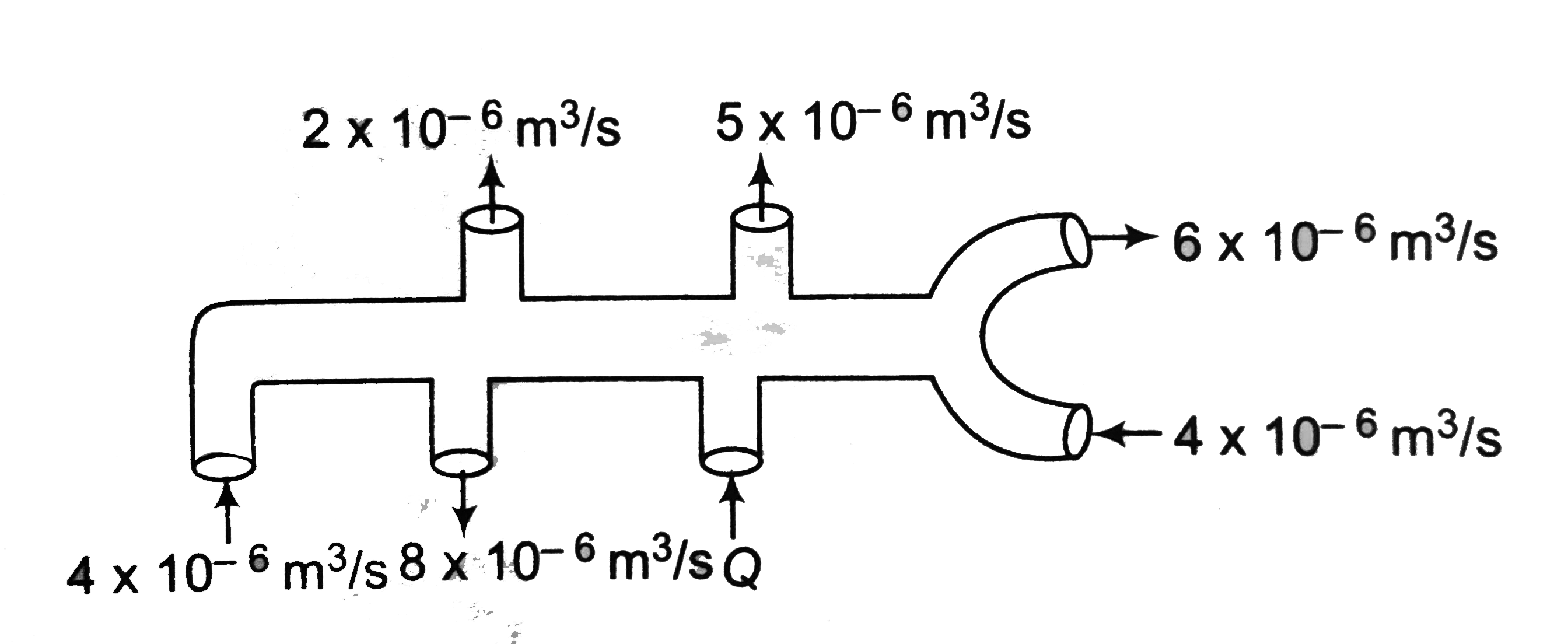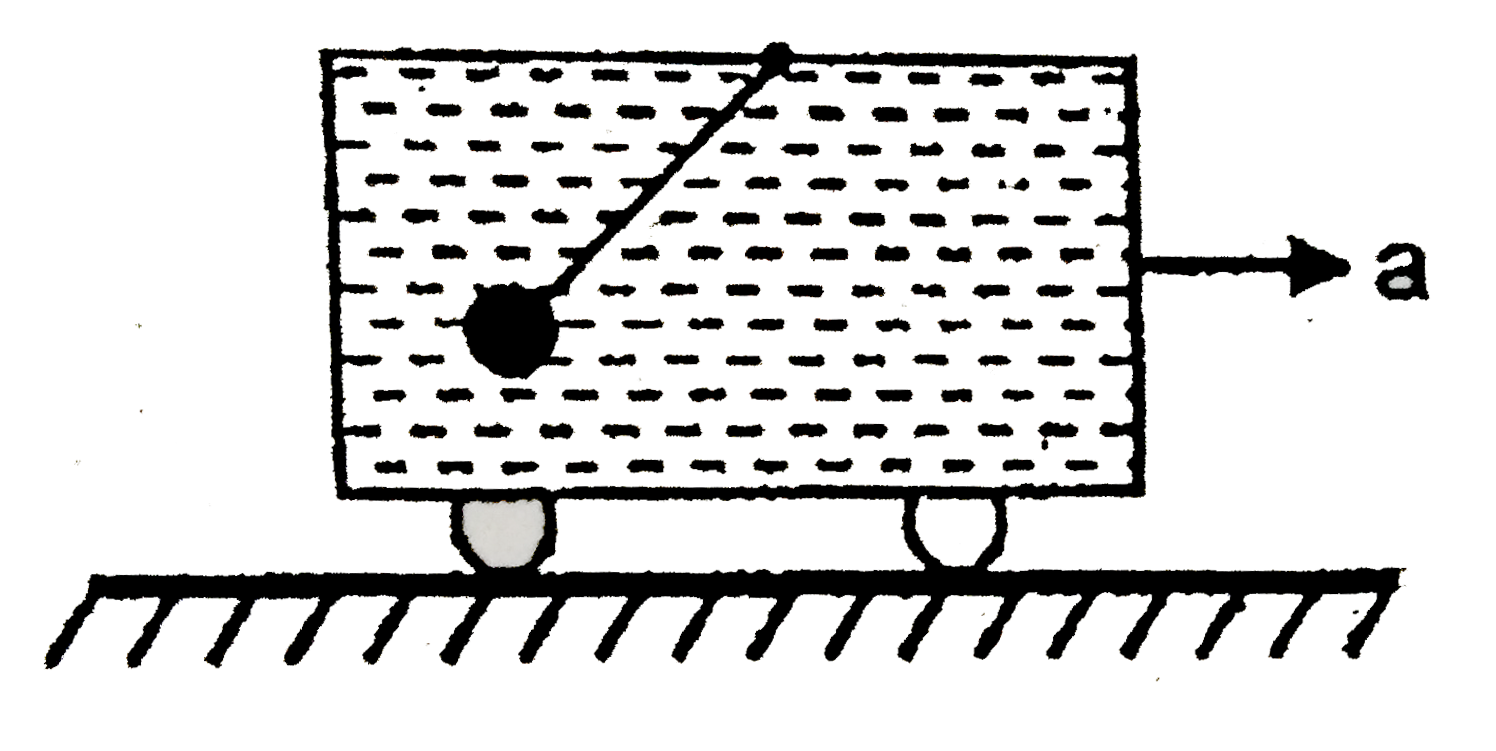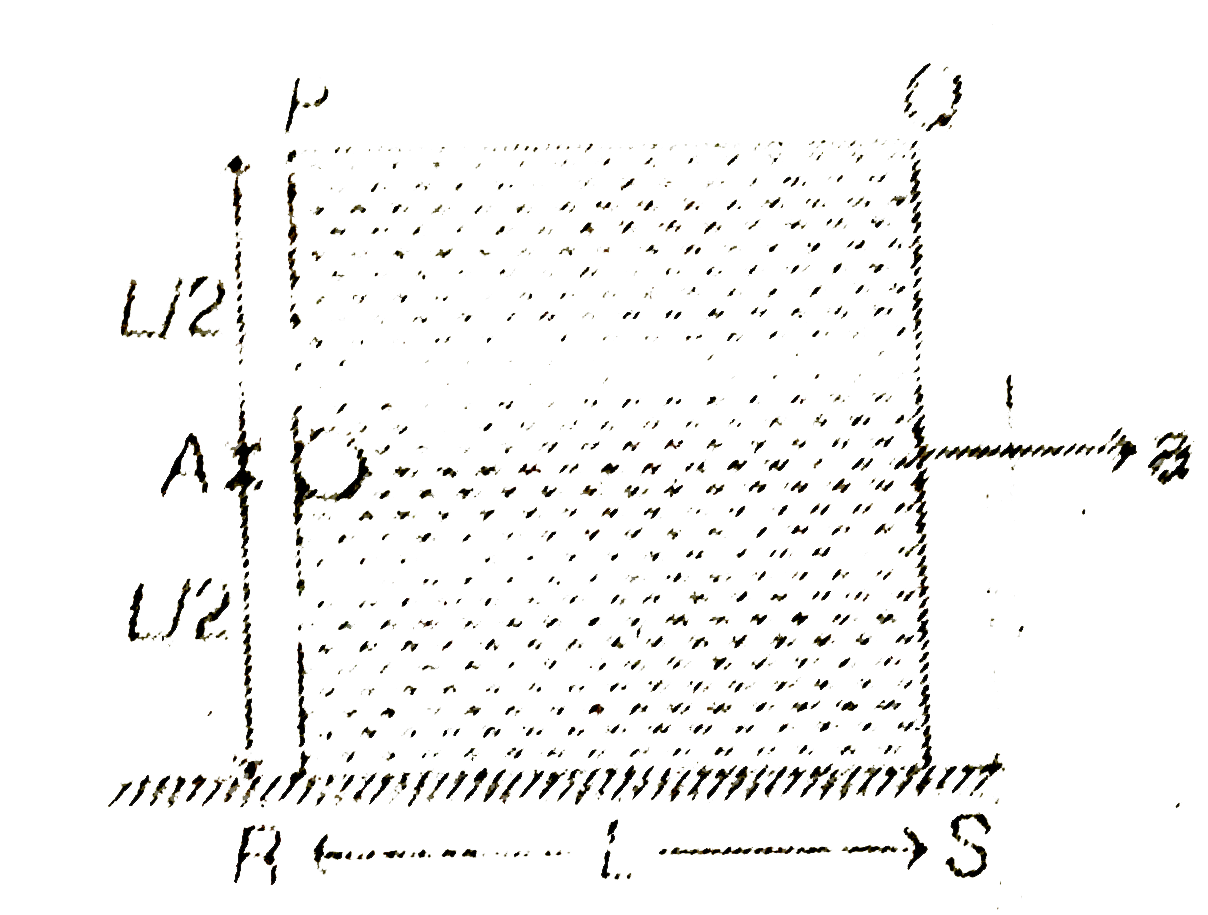For an ideal liquid
the bulk modulus is infinite
the bulk modulus is zero
the shear modulus is infinite
the shear modulus is zero
The correct Answer is:A, D
As an ideal liquid is not compressible.
Hence, change in volume, ΔV=0
Bulk modulus B=StressVolume strain=F/AΔV/V=FA×VΔV=∞
Compressibility, K=1B=1∞=0
As there is no tangential (viscous) force exists in case of an ideal fluid, hence, shear modulus = 0.
Topper's Solved these Questions
- BOOK - NCERT EXEMPLAR ENGLISHCHAPTER - MECHANICAL PROPERTIES OF SOLIDSEXERCISE - LONG SHORT ANSWER TYPE QUESTION16videos
MECHANICAL PROPERTIES OF SOLIDS
- BOOK - NCERT EXEMPLAR ENGLISHCHAPTER - MECHANICAL PROPERTIES OF FLUIDSEXERCISE - Long Answer Type Questions3videos
MECHANICAL PROPERTIES OF FLUIDS
- BOOK - NCERT EXEMPLAR ENGLISHCHAPTER - MOTION IN A PLANEEXERCISE - Multiple Choice Questions37videos
MOTION IN A PLANE
Similar Questions
For a ideal liquid solution with P∘A>P∘B, which relation betweenXA ((mole fraction of A in liquid phase) and YA(mole fraction of A in vapour phase) is correct ?
View SolutionTwo volatile liquide A and B are mixed in mole ratio 1:3, to form an ideal liquid solution Vapour pressure of pure. A and B are 600 torr and 200 torr. Volume of container for vapour is 76 litre. (R=1/12 litre atm/K/mole)
Calculate the mole of A in vapour phase at 300 K, assuming negligible amount of vapour is present compared to liquid in containerView Solution
Knowledge Check
- Question 1 - Select One
For an ideal iquid
Abulk modulus is infinite and shear modulus is zero.BÂ bulk modulus is zero and shear modulus is inifinite.Cbulk moduius is infinite and shear modulus is also infiniteDbulk modulus is zero and shear modulus is also zero. - Question 2 - Select One
In the figure, an ideal liquid flows through the tube, which is of uniform cross section. The liquid has velocities vA and vB, and pressures PA and PB at the points A and B, respectively. Then
 AvB>vABvB=vACPB<PADPB=PA
AvB>vABvB=vACPB<PADPB=PA
Answer the question briefly and the point:
What are the properties of an ideal liquid ?View SolutionAssertion: The velocity of flow of a liquid is smaller when pressure is larger and vice versa.
Reason: According to Bernoulli's theorem, for the stream line flow of an ideal liquid, the total energy per unit mass remains constant.View SolutionThe pipe shows the volume flow rate of an ideal liquid at certain time and its direction. What is the value of Q in m3/s? (Assume steady state and equal area of cross section at each opening)
 View Solution
View SolutionWhat is an ideal liquid ?
View SolutionFigure shows a closed container completely filled with an ideal liquid of density ρ. In the liquid there is a spherical body of volume V and density σ attached to a string whose other end is attached to the roof of the container. The container is accelerating with an acceleration 'a' towards right. The force exerted by the liquid on the spherical body when it is in equillibrium with respect to the liquid, will be :
 View Solution
View SolutionA small solid ball of density ρ is held inside at point A of a cubical container of side L, filled with an ideal liquid of density 4ρ as shown in the figure. Now, if the container starts moving with constant acceleration a horizontally and the ball is released from point A simultaneously, then choose from following the correct option(s)
 View Solution
View Solution
